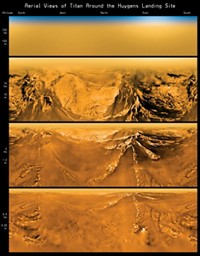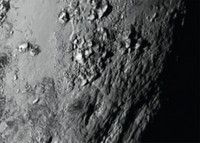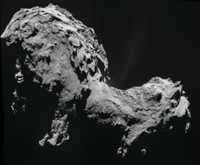Advertisement
Grab your lab coat. Let's get started
Welcome!
Welcome!
Create an account below to get 6 C&EN articles per month, receive newsletters and more - all free.
It seems this is your first time logging in online. Please enter the following information to continue.
As an ACS member you automatically get access to this site. All we need is few more details to create your reading experience.
Not you? Sign in with a different account.
Not you? Sign in with a different account.
ERROR 1
ERROR 1
ERROR 2
ERROR 2
ERROR 2
ERROR 2
ERROR 2
Password and Confirm password must match.
If you have an ACS member number, please enter it here so we can link this account to your membership. (optional)
ERROR 2
ACS values your privacy. By submitting your information, you are gaining access to C&EN and subscribing to our weekly newsletter. We use the information you provide to make your reading experience better, and we will never sell your data to third party members.
Physical Chemistry
The Little Robot That Could
by Rudy Baum, Editor-in-chief
September 12, 2005
| A version of this story appeared in
Volume 83, Issue 37
I'm writing this on the Thursday of what has been a long week. The ACS national meeting began late last week, ran through the weekend, and is coming to an end today. I love ACS meetings, but they are grueling. And the news of increasing despair in the wake of Hurricane Katrina weighed heavily on all C&EN staff.
We're closing a terrific issue of C&EN today, but it seems many people here at the magazine are exhausted.
Looking at e-mail during a spare moment this afternoon, I opened a press release from the National Aeronautics & Space Administration titled "NASA's Durable Spirit Sends Intriguing New Images From Mars" and clicked on one of the images. A rocky, barren, red landscape came into view. Robin Giroux, C&EN's assistant managing editor for editing and production, came into my office with changes to the letters pages, and I said, "Hey, look at this."
"What is it?" she asked. "Iraq?"
"No, Mars," I said.
The Spirit rover landed on Mars in February 2004 for a three-month mission. It's still going strong, having now driven 3 miles across the martian terrain. The images that were the subject of the NASA press release--two of which we have reproduced here--were taken from the summit of an 82-meter-high hill that Spirit has spent the past 15 months climbing. During the climb, the mobile robot has been exploring the geology of the hill, especially looking for signs of water in the exposed rock.
NASA has taken a lot of lumps over the past several years in the wake of the Columbia disaster and the further mishaps with foam shedding from the external fuel tank during the recent mission of space shuttle Discovery. Much of the criticism has been well-deserved. NASA has done many things right, however, and deserves praise for them.
Most of the things it has done right have involved unmanned probes of the solar system. The panorama (with a portion of Spirit in the foreground) from a low martian hill--with an outcrop in the near distance, a low hill in the mid-distance, and a major mountain on the distant horizon--stirs the soul. The black-and-white image is of a region we have never seen before; Spirit, like a mountaineer, peers for the first time over the ridge it has taken so many months to climb. For all our flaws, we humans are remarkable creatures, and our exploration of Mars and the other planets and bodies of the solar system is one of our proudest achievements.
Thanks for reading.






Join the conversation
Contact the reporter
Submit a Letter to the Editor for publication
Engage with us on Twitter